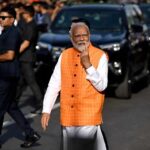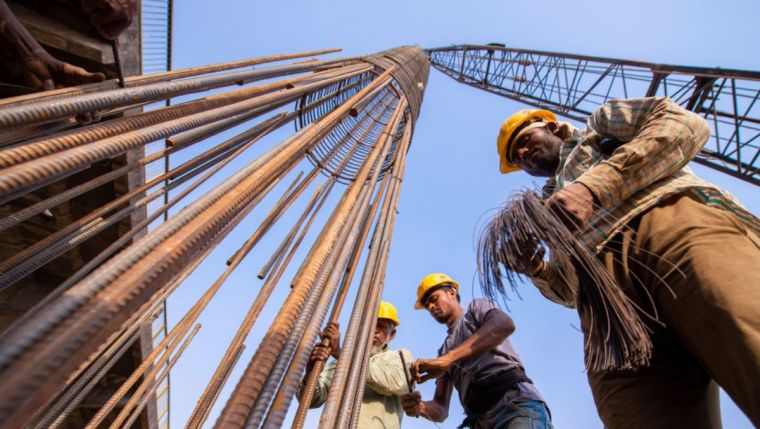A fresh war of words has erupted between India and China after Indian Commerce Minister Piyush Goyal made remarks about reducing dependence on Chinese imports. Chinese state-run media swiftly retaliated, labeling India’s stance as “opportunistic” and asserting that New Delhi “cannot seize our market.” The escalating rhetoric highlights deepening trade tensions between the two Asian giants.
This article delves into the latest controversy, analyzing Chinese media’s sharp response, India’s push for self-reliance, and the broader implications for bilateral trade.
Piyush Goyal’s Remarks Spark Outrage in China
At a recent industry event, Commerce and Industry Minister Piyush Goyal emphasized India’s efforts to reduce reliance on Chinese imports and boost domestic manufacturing under the “Make in India” initiative. He stated:
“We cannot be dependent on other nations for critical goods. India must strengthen its manufacturing base to compete globally.”
While Goyal did not explicitly name China, the context was clear—India has been actively discouraging Chinese imports, particularly in sectors like electronics, pharmaceuticals, and telecom equipment.
Chinese Media’s Fiery Response
Chinese state-backed media outlet Global Times published a scathing editorial, accusing India of “economic opportunism” and claiming that New Delhi’s policies were “doomed to fail.” Key excerpts include:
- “India’s attempts to block Chinese products are short-sighted and won’t harm China’s economy.”
- “New Delhi’s protectionist policies reveal its inability to compete fairly in global trade.”
- “India cannot seize China’s market share—it lacks the industrial capacity and technological edge.”
Another article in China Daily mocked India’s “self-reliance” push, arguing that Chinese supply chains remain irreplaceable for Indian businesses.
Why Is China Aggressively Defending Its Trade Position?
China’s sharp reaction stems from three key factors:
1. India’s Growing Import Restrictions
India has imposed strict curbs on Chinese goods since the 2020 Galwan clash, including:
- Bans on 59 Chinese apps (TikTok, WeChat)
- Increased tariffs on electronics and solar panels
- Mandatory approvals for FDI from neighboring countries (targeting China)
2. Declining Trade Deficit Concerns
China enjoys a massive trade surplus with India (over $100 billion in 2023). Any move by India to cut imports threatens Beijing’s economic leverage.
3. Global Supply Chain Shifts
With the US and EU also reducing dependence on China, Beijing fears a domino effect if India succeeds in decoupling.
Can India Really Reduce Dependence on China?
India’s Strengths:
- Rising electronics manufacturing (PLI schemes for smartphones, semiconductors)
- Pharma and API production boost (post-COVID supply chain reforms)
- Strong services sector offsetting some trade gaps
Challenges Ahead:
- Critical components (semiconductors, lithium batteries) still imported from China
- Limited scale in high-tech manufacturing compared to China
- Global competition (Vietnam, Thailand attract supply chains faster)
What’s Next for India-China Trade Relations?
- More trade barriers? India may further restrict non-essential imports.
- Diplomatic talks? Both nations could negotiate behind closed doors.
- Long-term decoupling? If India builds domestic capacity, China’s influence may wane.
Conclusion: A Trade War in the Making?
The latest exchange between Piyush Goyal and Chinese media underscores the deepening economic rift between India and China. While Beijing dismisses India’s self-reliance push as “opportunistic,” New Delhi remains determined to reduce dependency on Chinese imports.
As both nations vie for economic dominance in Asia, the coming months will reveal whether this war of words escalates into a full-blown trade conflict—or if pragmatic diplomacy prevails.
FAQs
Q: Why is Chinese media angry at Piyush Goyal?
A: Chinese state media criticized Goyal’s remarks on reducing imports, calling India “opportunistic” and incapable of replacing China’s market share.
Q: What is India doing to reduce reliance on China?
A: India has imposed tariffs, banned Chinese apps, and incentivized local manufacturing under “Make in India.”
Q: Can India succeed in decoupling from China economically?
A: While India is making progress in electronics and pharma, it still depends on China for critical components like semiconductors.
Q: How has China responded to India’s trade policies?
A: Chinese media has mocked India’s efforts, claiming its economy is too strong to be affected by New Delhi’s restrictions.


































